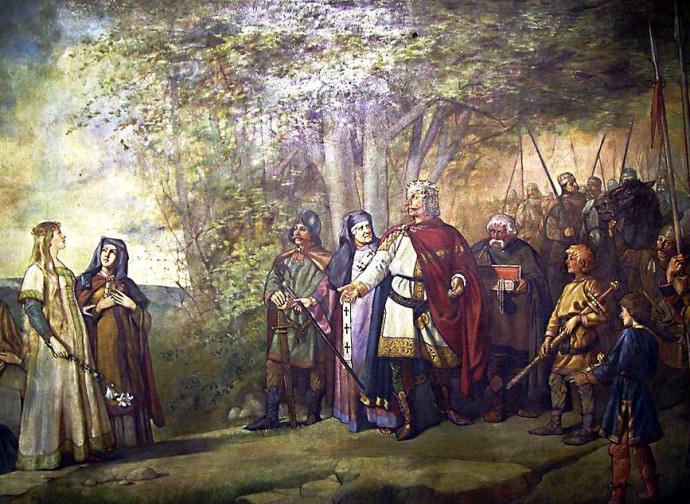Saint Matilda of Germany
She was a model of Christian queen, defined by her contemporaries as “a woman of admirable piety”.

Model of Christian queen, defined by her contemporaries as “a woman of admirable piety”, Saint Matilda of Germany (c. 895-968), or of Ringelheim, was born into a family of ancient nobility and was educated at the monastery of Herford, where her grandmother was abbess. Around the age of 14 she was married to Henry of Saxony, known as The Fowler, who was about 20 years her senior. They had five children, all of whom played an important role in history: Otto I, founder of the Ottonian dynasty and emperor since 962; Gerberga, who married the King of France; Hedwig, mother of Hugh Capet, initiator of the Capetian dynasty; Henry I, Duke of Bavaria, and Saint Bruno (925-965), Archbishop of Cologne. In 919 her husband Henry became King of the Eastern Franks (i.e. of the territory largely corresponding to present-day Germany); and in the following years, winning several battles, he managed to consolidate the kingdom.
Matilda had a salutary effect on her husband, who trusted her blindly, noted her Christian virtues and, thanks to his wife, tempered certain asperities of his character. Even as queen she lived an austere life, like a nun, and was always humble and ready to help the needy. Dedicated to prayer and generous in almsgiving, she often visited the poor in their homes with a bag of money, trying not to be noticed. Her husband died in 936, leaving her vast estates on which she founded churches, monasteries and schools for the poor. As a widow Matilda stripped herself of all her jewels and tried in vain to favour the succession to the throne of her son Henry, instead of her eldest son Otto. Later, when Henry rebelled against his brother, the saint worked for a reconciliation between her two sons, who some time later joined forces against their mother, accusing her of having impoverished the crown with her works of charity.
She patiently endured her sons’ ingratitude, ceded her husband's inheritance to them, and retired to the village where she was born. But after her retirement things did not go well for the Germanic kingdom; Henry fell ill and Otto's wife, urged by the clergy and the nobility, pressed the two brothers to call their mother back to court, asking for her forgiveness. Her beloved Henry did not, however, desist from causing her suffering, for instance when he brutally suppressed a revolt in Bavaria. In 955, when she saw him for the last time, she predicted his death, begging him to convert. In 962, the year of Otto’s journey to Rome to be crowned emperor (accompanied by Saint Adelaide, whom he had married after the death of Edith of Wessex), he ruled the Holy Roman Empire together with his son, saint Bruno. Matilda’s last years were mostly spent living in the monasteries she had founded and, after a long illness, she died with a reputation of sanctity in the Abbey of Quedlinburg, where she was buried next to her husband.




